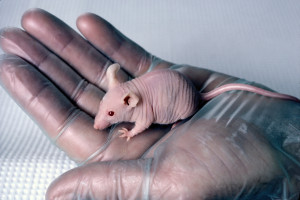A novel anti-cancer drug is found to shrink every tumour type tested in experimental animal models. Let’s rejoice and start clinical trials without delay!
Well, not so fast.
Preclinical experiments in animal models are aimed at showing that a new drug will be useful in human beings. However, individual animal experiments are often too small to support inferences about clinical utility. Techniques such as meta-analysis offer an attractive method for pooling individual studies and supporting more confident assertions regarding the potential clinical utility of a new drug.
With this in mind, our team undertook a meta-analysis using the anti-cancer drug sunitinib (Sutent). Since its publication in eLife, the meta-analysis has been covered in the BMJ, Nature, The Guardian, and Retraction Watch. We were primarily interested in whether the properties of sunitinib observed in preclinical studies would correlate with those observed in patients
What we found were many avoidable roadblocks to proper meta-analysis. Firstly, poor reporting quality in many experiments made it impossible to include them in the analysis. Examples include lack of error bars or no sample size given. Secondly, poor methodological practices such as lack of blinding and randomization, or reliance on single models were common, calling the quality of the data we were extracting into question. Furthermore, there was no discernible dose-response relationship connected across experiments in the same malignancy. Finally, trim and fill analysis (a tool to detect the possibility of publication bias) suggested that the overall efficacy of sunitinib across all malignancies could be inflated as much as 45%.
Other investigators, including those just published in PLoS Biology, have shown similar results in other diseases and have called for reforms to the way we perform and report animal experiments meant to influence the decision to move into clinical trials. It may be time that we looked more closely at the way we test new anti-cancer agents in animal models to ensure we are getting the highest quality data to make decisions.
Citations:
- Henderson, V. C. et al. eLife 4, e08351 (2015). http://elifesciences.org/content/4/e08351
- Macleod, M. R. et al. PLoS Biol. http://dx.doi.org/10.1371/journal.pbio.1002273 (2015).
BibTeX
@Manual{stream2015-889,
title = {Too much of a good thing},
journal = {STREAM research},
author = {Valerie Henderson},
address = {Montreal, Canada},
date = 2015,
month = oct,
day = 16,
url = {http://www.translationalethics.com/2015/10/16/too-much-of-a-good-thing/}
}
MLA
Valerie Henderson. "Too much of a good thing" Web blog post. STREAM research. 16 Oct 2015. Web. 04 Dec 2024. <http://www.translationalethics.com/2015/10/16/too-much-of-a-good-thing/>
APA
Valerie Henderson. (2015, Oct 16). Too much of a good thing [Web log post]. Retrieved from http://www.translationalethics.com/2015/10/16/too-much-of-a-good-thing/


Leave a Reply